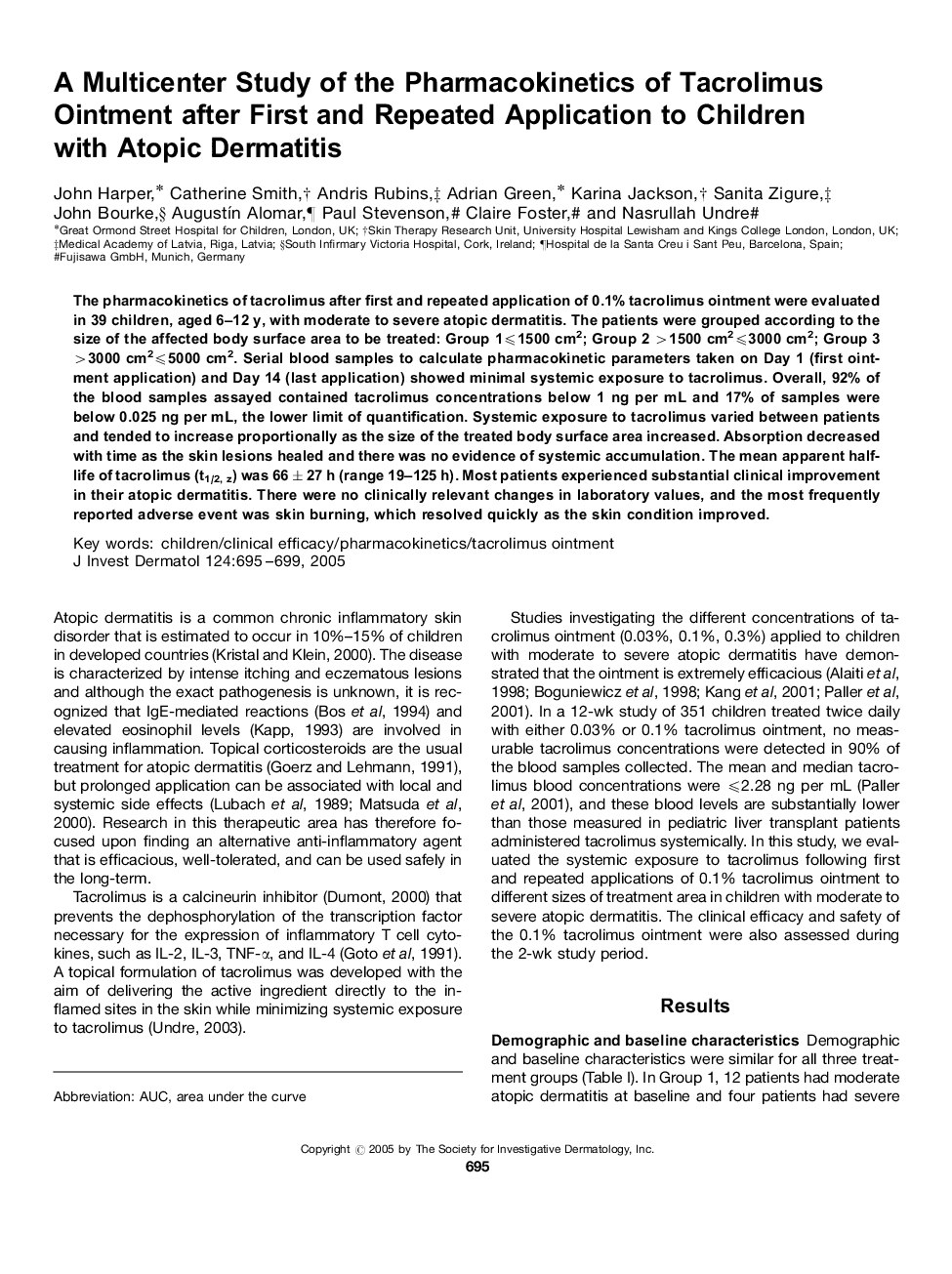| Article ID | Journal | Published Year | Pages | File Type |
|---|---|---|---|---|
| 9230337 | Journal of Investigative Dermatology | 2005 | 5 Pages |
Abstract
The pharmacokinetics of tacrolimus after first and repeated application of 0.1% tacrolimus ointment were evaluated in 39 children, aged 6-12 y, with moderate to severe atopic dermatitis. The patients were grouped according to the size of the affected body surface area to be treated: Group 1â¤1500 cm2; Group 2 >1500 cm2â¤3000 cm2; Group 3 >3000 cm2â¤5000 cm2. Serial blood samples to calculate pharmacokinetic parameters taken on Day 1 (first ointment application) and Day 14 (last application) showed minimal systemic exposure to tacrolimus. Overall, 92% of the blood samples assayed contained tacrolimus concentrations below 1 ng per mL and 17% of samples were below 0.025 ng per mL, the lower limit of quantification. Systemic exposure to tacrolimus varied between patients and tended to increase proportionally as the size of the treated body surface area increased. Absorption decreased with time as the skin lesions healed and there was no evidence of systemic accumulation. The mean apparent half-life of tacrolimus (t1/2, z) was 66±27 h (range 19-125 h). Most patients experienced substantial clinical improvement in their atopic dermatitis. There were no clinically relevant changes in laboratory values, and the most frequently reported adverse event was skin burning, which resolved quickly as the skin condition improved.
Related Topics
Health Sciences
Medicine and Dentistry
Dermatology
Authors
John Harper, Catherine Smith, Andris Rubins, Adrian Green, Karina Jackson, Sanita Zigure, John Bourke, AugustÃn Alomar, Paul Stevenson, Claire Foster, Nasrullah Undre,
